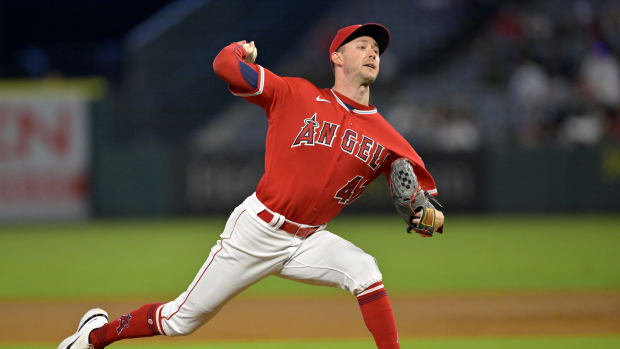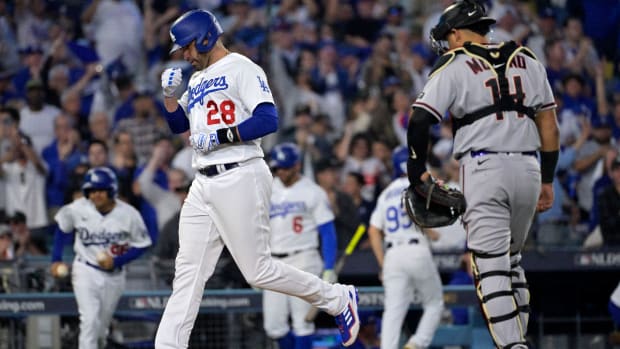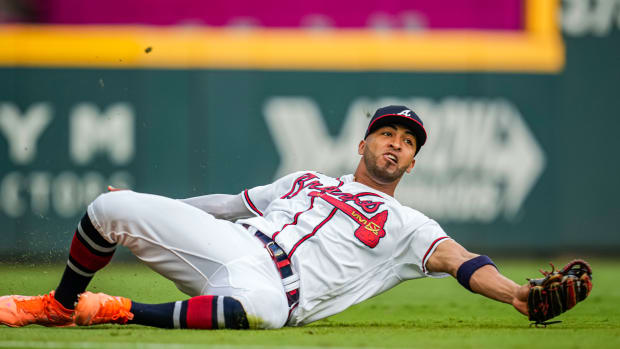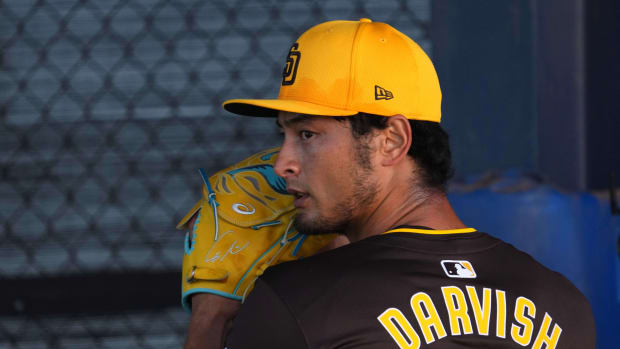To be continued
Since last summer, Sports Illustrated reporters Luis Fernando Llosa and L. Jon Wertheim have been investigating an alleged illegal steroid distribution network that has implicated pro athletes. Earlier this year the reporters accompanied federal and state drug enforcement agents on a coordinated raid of an Orlando compound pharmacy and a Jupiter, Fla., "anti-aging" clinic that investigators allege conspired to fraudulently prescribe steroids, human growth hormone and other performance enhancing drugs over the Internet.
While it's not hard to see why all concerned parties would like to view the Mitchell Report as both a coda and as a "vehicle for moving forward," as one MLB executive put it, the reality is far less tidy. Two ongoing criminal investigations -- BALCO and the Albany DA's prosecution of a wide-ranging Internet pharmacy pipeline -- are likely to reveal the names of additional players and distribution channels. In fact, sources close to the Albany investigation tell SI.com they believe the litany of names released on Thursday was "not at all a full and final" compilation.
Furthermore, there are also other large-scale, ongoing probes Sen. George Mitchell was clearly unable to access. For instance, there's an international DEA operation, code named "Raw Deal," that traces the movement of raw steroid and HGH powder from manufacturing labs in China to the basements and garages of American dealers. Raids have unearthed lengthy client lists and hard drive evidence that sources tell SI.com may well lead directly to the clubhouses and locker rooms of pro sports teams.
Inasmuch as their interests and objectives often conflicted, the Mitchell investigation team, Major League Baseball and the MLB Players Association found a sliver of common ground: Each party sought to portray the release of Thursday's report as the end of a troubled, drug-addled era in baseball. As solutions and recommendations for detoxing the sport were bandied about like so many fungoes, the theme of "closure" echoed throughout the day. Minutes into his press conference during which the report was revealed, the former senator talked about "bringing a close to this troubling chapter."
But for all the information and names -- new and rehashed -- aired in Mitchell's report, perhaps more revealing were the omissions. The majority of evidence accumulated by Mitchell clearly came from the BALCO and Albany investigations. In an offshoot of the BALCO case, former Mets clubhouse attendant Kirk Radomski provided names and evidence -- that included cancelled checks to Radomski, money orders and wire transfers -- as part of his plea agreement; the Albany investigation was also heavily featured.
Though it does not mark the end of baseball's Steroid Era, Mitchell's report does help contextualize just how sensationally rampant steroid usage in the game has become. Lost amid the mania over the "big names," the report also offers many reasonable suggestions going forward, particularly with respect to testing.
Clearly, tasking Major League Baseball with administering the testing of its own stars was a near-fatal conflict of interest. (To say nothing of a public relations debacle.) If Major League Baseball and the Players' Association can accept and implement the report's recommendations -- improve testing administered by an independent body -- it will mark a meaningful step toward a cleaner sport.
Yet unfortunately, even with full cooperation of all parties, it's hard to envision the curtain being drawn on the "Culture of Cheating." Sadly, the cat-and-mouse game of performance-enhancing drug use will persist as long as technology allows. The creation of one designer steroid undetectable under the available testing procedures could easily occasion Steroid Era 2.0.


































